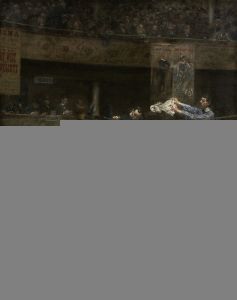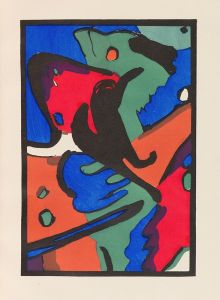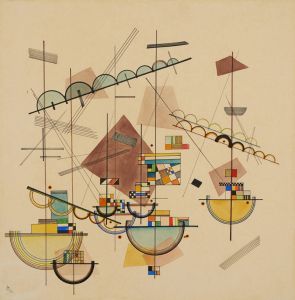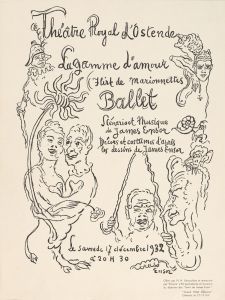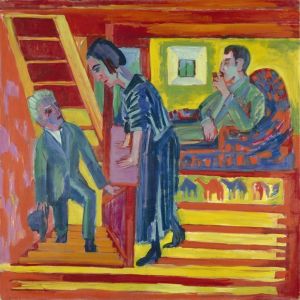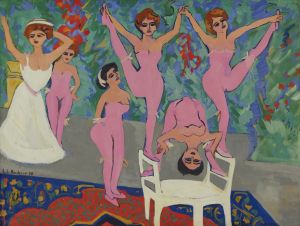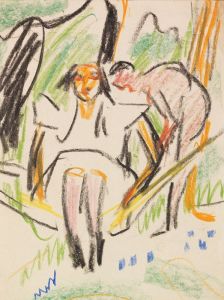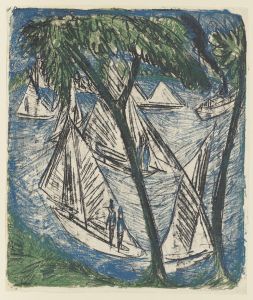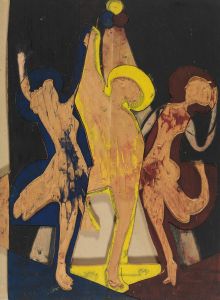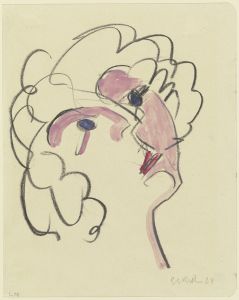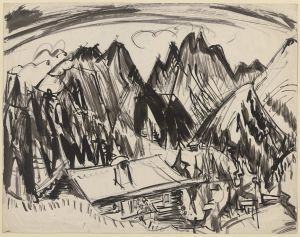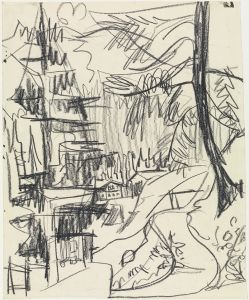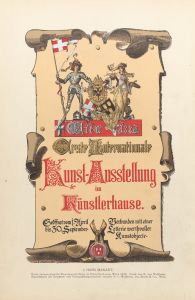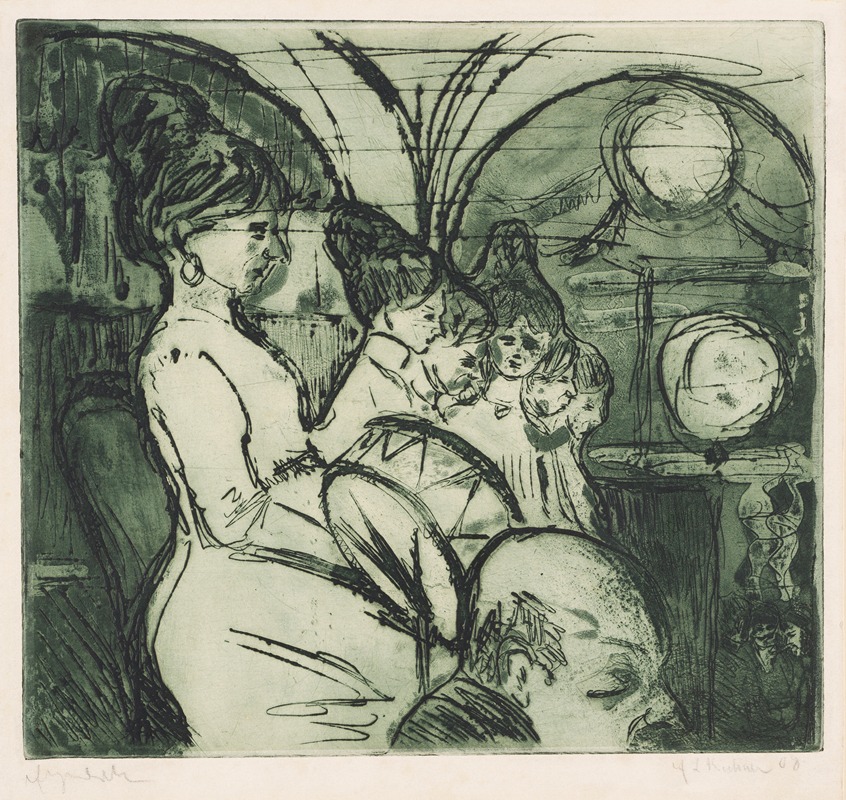
Damenkapelle
A hand-painted replica of Ernst Ludwig Kirchner’s masterpiece Damenkapelle, meticulously crafted by professional artists to capture the true essence of the original. Each piece is created with museum-quality canvas and rare mineral pigments, carefully painted by experienced artists with delicate brushstrokes and rich, layered colors to perfectly recreate the texture of the original artwork. Unlike machine-printed reproductions, this hand-painted version brings the painting to life, infused with the artist’s emotions and skill in every stroke. Whether for personal collection or home decoration, it instantly elevates the artistic atmosphere of any space.
Ernst Ludwig Kirchner, a prominent German expressionist painter and one of the founding members of the artist group Die Brücke, created the painting "Damenkapelle" during a period marked by significant artistic innovation and exploration. Kirchner's work is characterized by its bold use of color, dynamic compositions, and a focus on the human figure, often reflecting the social and cultural tensions of the early 20th century.
"Damenkapelle," which translates to "Ladies' Chapel," is a work that exemplifies Kirchner's distinctive style and thematic interests. Although specific details about the painting's creation, such as the exact year it was painted, are not widely documented, it is consistent with Kirchner's oeuvre from the early 1900s, a time when he was deeply engaged with the expressionist movement.
Kirchner's art often depicted scenes of urban life, capturing the vibrancy and chaos of modernity. His works frequently featured figures in motion, imbued with a sense of immediacy and emotional intensity. In "Damenkapelle," Kirchner employs his characteristic expressive brushwork and vivid color palette to convey a scene that is both dynamic and introspective. The painting likely reflects Kirchner's interest in exploring themes of femininity and spirituality, as suggested by the title.
The composition of "Damenkapelle" is marked by its use of elongated forms and exaggerated perspectives, techniques that Kirchner used to convey psychological depth and emotional resonance. The figures in the painting are rendered with a sense of fluidity and movement, their forms intertwining with the surrounding space in a manner that suggests both connection and isolation. This interplay of figures and space is a hallmark of Kirchner's work, reflecting his interest in the complexities of human relationships and the impact of modern life on the individual psyche.
Kirchner's work was heavily influenced by non-Western art forms, particularly African and Oceanic art, which he encountered through museum collections and exhibitions in Germany. These influences are evident in the stylized forms and bold patterns that characterize much of his work, including "Damenkapelle." Kirchner's engagement with these art forms was part of a broader expressionist interest in exploring alternative aesthetic traditions as a means of challenging conventional artistic norms.
Throughout his career, Kirchner faced significant personal and professional challenges, including struggles with mental health and the impact of World War I. Despite these difficulties, he remained a prolific and influential artist, contributing significantly to the development of modern art. His work, including "Damenkapelle," continues to be celebrated for its innovative approach to form and color, as well as its ability to capture the complexities of the human experience.
Today, Kirchner's paintings are held in major art collections worldwide, and his legacy as a leading figure of the expressionist movement is well established. "Damenkapelle," like many of his works, offers viewers a glimpse into the vibrant and often tumultuous world of early 20th-century Europe, as seen through the eyes of one of its most visionary artists.





